Batree
Palm Trees as Energy Collectors A project by Aaliyah Mohammed, Areeba Shahid, Rand Kachlan, Suad Alfardan and Ayesha Taher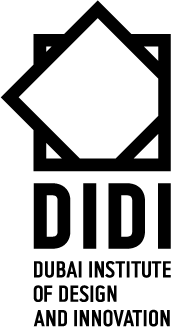
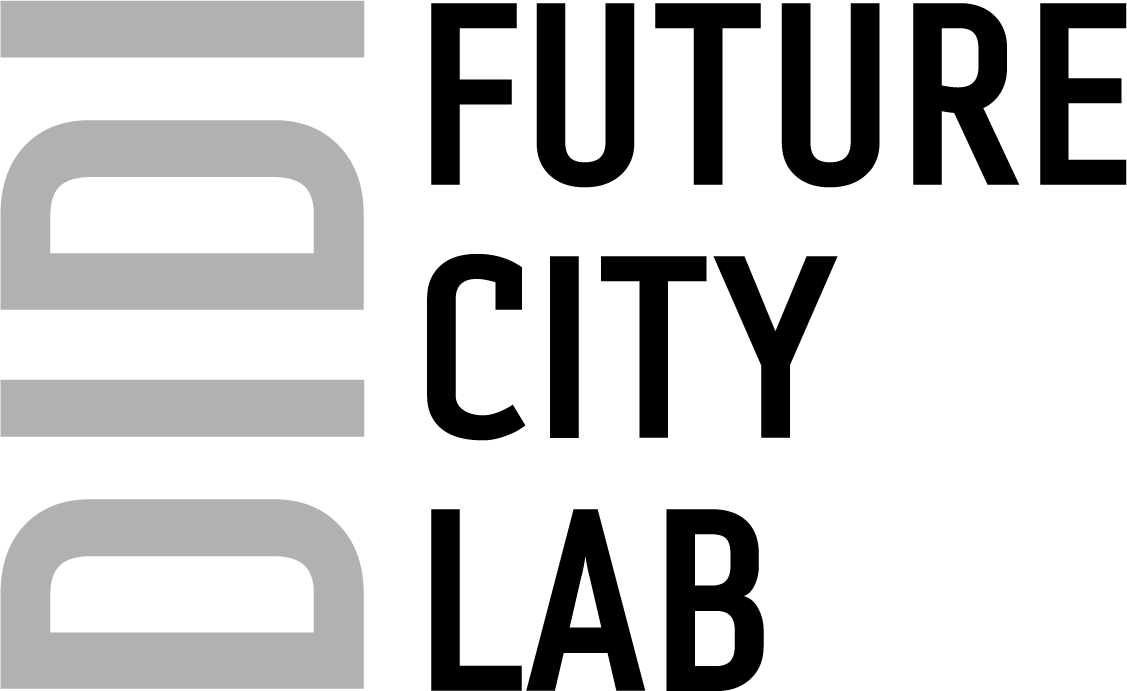
This project was instigated by a real-time mapping of the micro-wind patterns in Dubai,
studied in comparison with the prevailing winds expected in the area. Identifying differences
between micro and macro wind patterns, the study highlights the importance of quantifying and
mapping the micro-wind flows, in view of proposing ways to capitalize on them as a resource
to potentially generate electricity.
Using palm trees as sensors and potential harvesters of micro-winds, the project makes
use of custom machine learning tools and algorithms to extract from videos records the
wind intensity and impact on the trees’ movement, and of piezoelectric technology to
transform movement into electrical energy.
Sensing Wind in Dubai
PREVAILING WINDS
Prevailing winds are the dominant wind patterns that occur in a particular region or
location
over an extended period of time. They are influenced by various factors, including the
rotation
of the Earth, atmospheric pressure systems, and geographic features such as mountains
and bodies
of water. Prevailing winds generally blow from the same direction, although they may vary
in
strength.
Dubai's weather stations are strategically positioned across the city, equipped with
advanced
instruments and sensors to accurately measure wind speed and direction. These stations
utilize
anemometers to gauge wind speed, while wind vanes are employed to determine
the wind direction.
Weather stations in Dubai
continuously monitor and record prevailing winds to understand their impact on local
weather
conditions, air quality, and environmental factors.
The prevailing winds in Dubai are influenced by several factors. One key contributor is the
city's location within the Arabian Peninsula, which exposes it to the vast expanse of the
Arabian Desert. The desert's hot, dry air creates temperature differentials, causing air to
flow
from higher to lower pressure areas, thereby generating wind patterns. In the United
Arab Emirates (UAE), the prevailing wind patterns are influenced by its
geographical location, surrounded by deserts and the Arabian Gulf. The dominant wind patterns in
the UAE include:
Shamal & Northeasterly Winds
The Shamal wind is a significant feature of Dubai's weather during the summer months. It is a hot and dry northwesterly wind that carries dust and sand from the desert. The Shamal winds can be strong and result in reduced visibility due to blowing dust and sand, creating dusty conditions in the city. During the winter months, northeasterly winds can prevail in the UAE. These winds blow from the northeast, originating from the cooler continental air masses, and can bring cooler temperatures to the region.
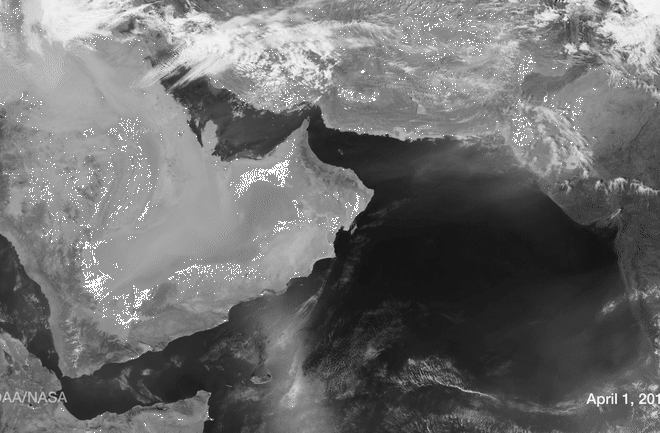 Shamal winds from July 28 - 30, 2018
Shamal winds from July 28 - 30, 2018
WIND IS ENERGY
Wind energy harvesting in the UAE
The first wind turbine in the region was established on Sir Bani Yas Island. This 65-meter tall turbine, equipped with three rotor blades each spanning 52 meters, can generate up to 850 kilowatts per hour. Both Masdar and Abu Dhabi's Tourism Development and Investment Company (TDIC) have set a goal to create an onshore wind farm on the island that could produce up to 30 megawatts.
Dubai has identified a location in Hatta to develop the UAE's first wind farm, with a projected capacity of 28MW, as part of its ongoing efforts to diversify its renewable energy sources. This move, which previously faced skepticism due to concerns about insufficient wind, represents a shift in the region's renewable energy strategy and is aligned with the Dubai Clean Energy Strategy 2050 that aims to derive 75% of Dubai’s total power capacity from clean energy by 2050.
Macro v/s Micro winds
Micro winds are local wind patterns that occur on a small scale, typically over distances
of
a few meters to a few kilometers. They often differ from the prevailing winds in the
surrounding area, and are usually
influenced by local topography, infrastructure, vegetation, and other factors that can
create turbulence in the air flow.
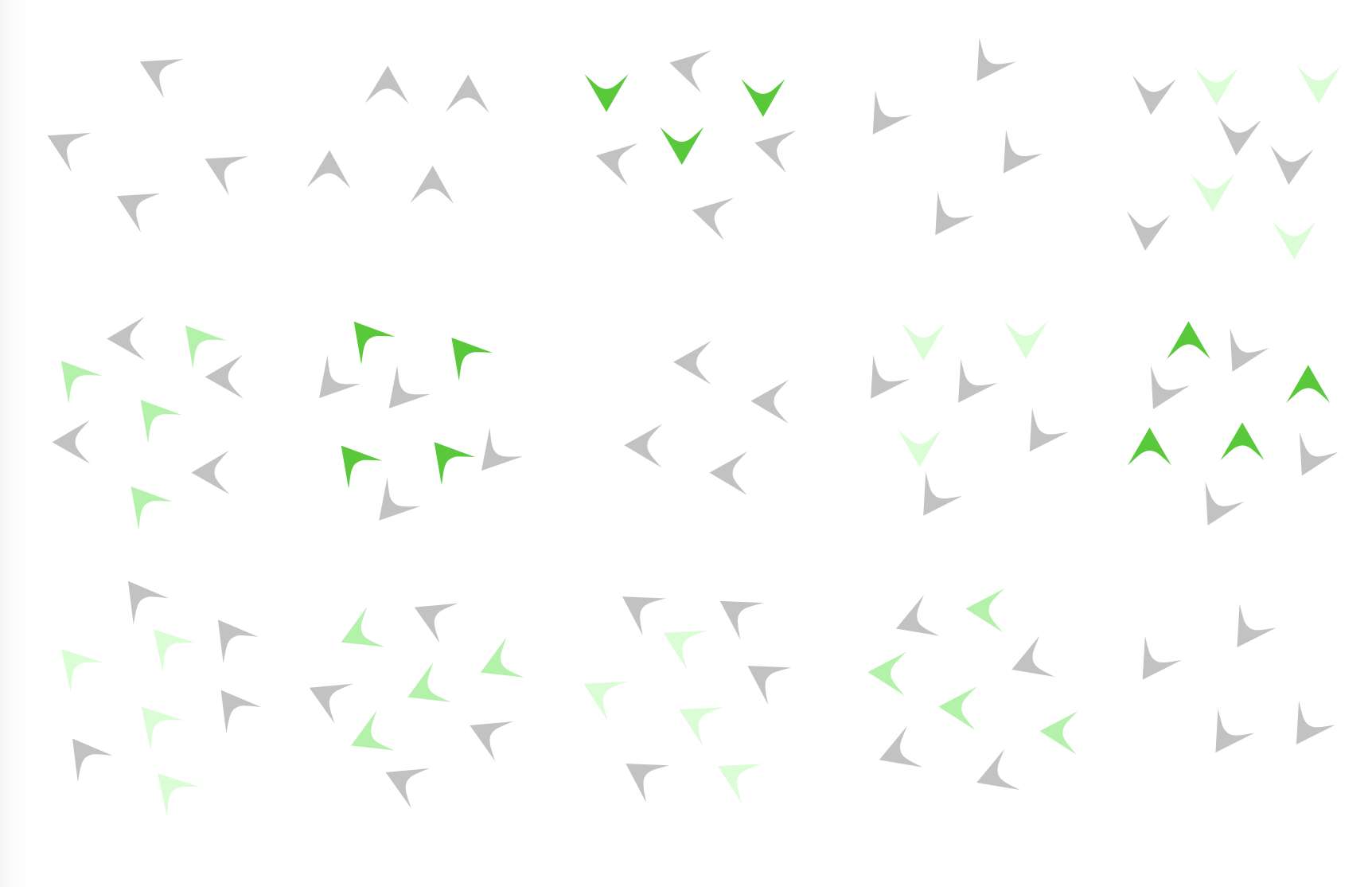 Comparing macro prevailing winds with micro perceived winds
Comparing macro prevailing winds with micro perceived winds
HARVESTING MICRO MOVEMENTS
Piezoelectric energy harvesting is a process that converts mechanical movement into
electrical energy by utilizing the piezoelectric effect. This technique is particularly
effective at capturing and converting small or "micro" movements, which are often ignored or
wasted in our environment.
PVDF piezoelectric sensors can be utilized to harvest wind
energy by converting the mechanical energy of the wind into electrical energy through the
piezoelectric effect.
 Piezoelectric Ribbon Sensor - Adafruit
Piezoelectric Ribbon Sensor - Adafruit
Trees as sensors
In order to study micro-wind patterns first-hand, the scope of investigation was narrowed to Dubai Design District, aiming to understand how the structure, placement and configuration of buildings in the locality influenced the manner in which wind moved, and how this may impact the surrounding environment.
The UAE is home to approximately 40 million palm trees. Being in a permanently static position, these trees perpetually receive the impact of wind. Narrowing down to a smaller, more measurable scale, D3 alone houses around a 100 palm trees of different variety. In order to track wind in a systematic manner, we decided to zero in on these trees, using them as sensors or subjects of study to understand the intensity, movement, and direction of wind.
01Color Detection & Motion Heatmaps
One of the first attempts at analyzing patterns of trees in the wind involved directly tracking the movement of leaves. Creating motion heatmaps allowed for visualising parts of the tree with the highest concentration of motion by creating an initial mask through which further movement could be detected and recorded.
One precautionary measure was the use of filters. Filtering allowed for refinement the movement of other entities in the background, such as cars or people. In order to attain information regarding the tree alone,masks that detected browns and greens , i.e the leaves and trunk of the tree, to isolate them within the frame were created for more accurate data.
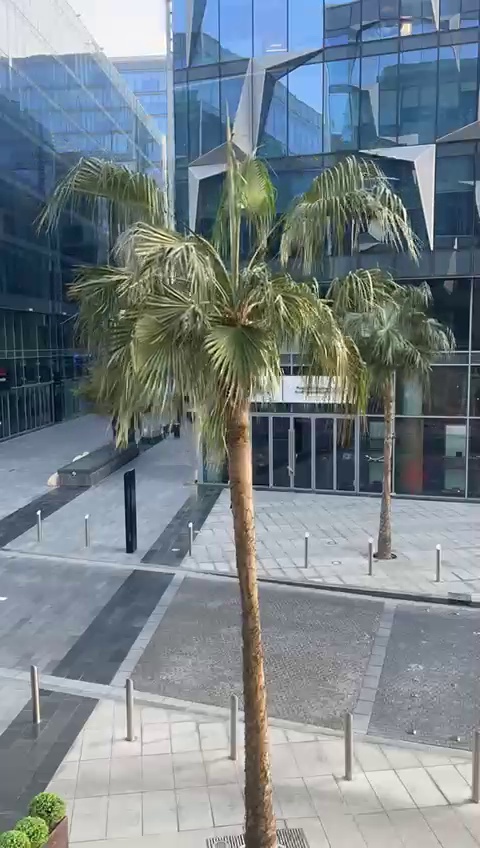
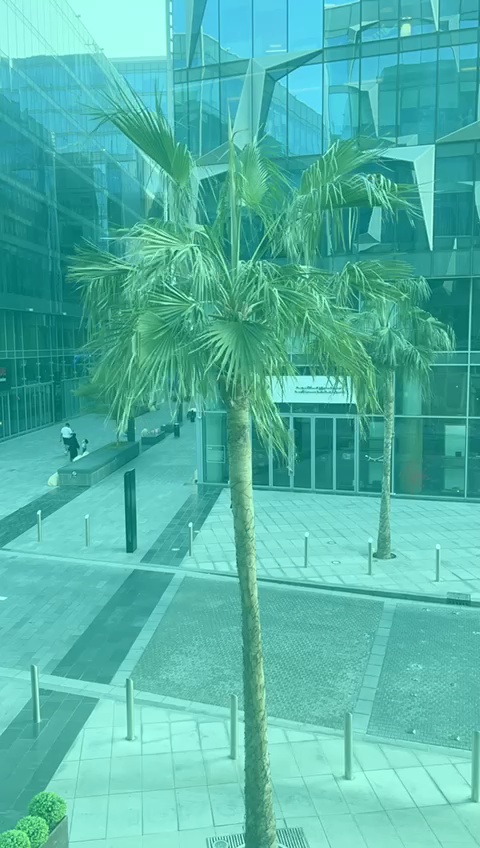

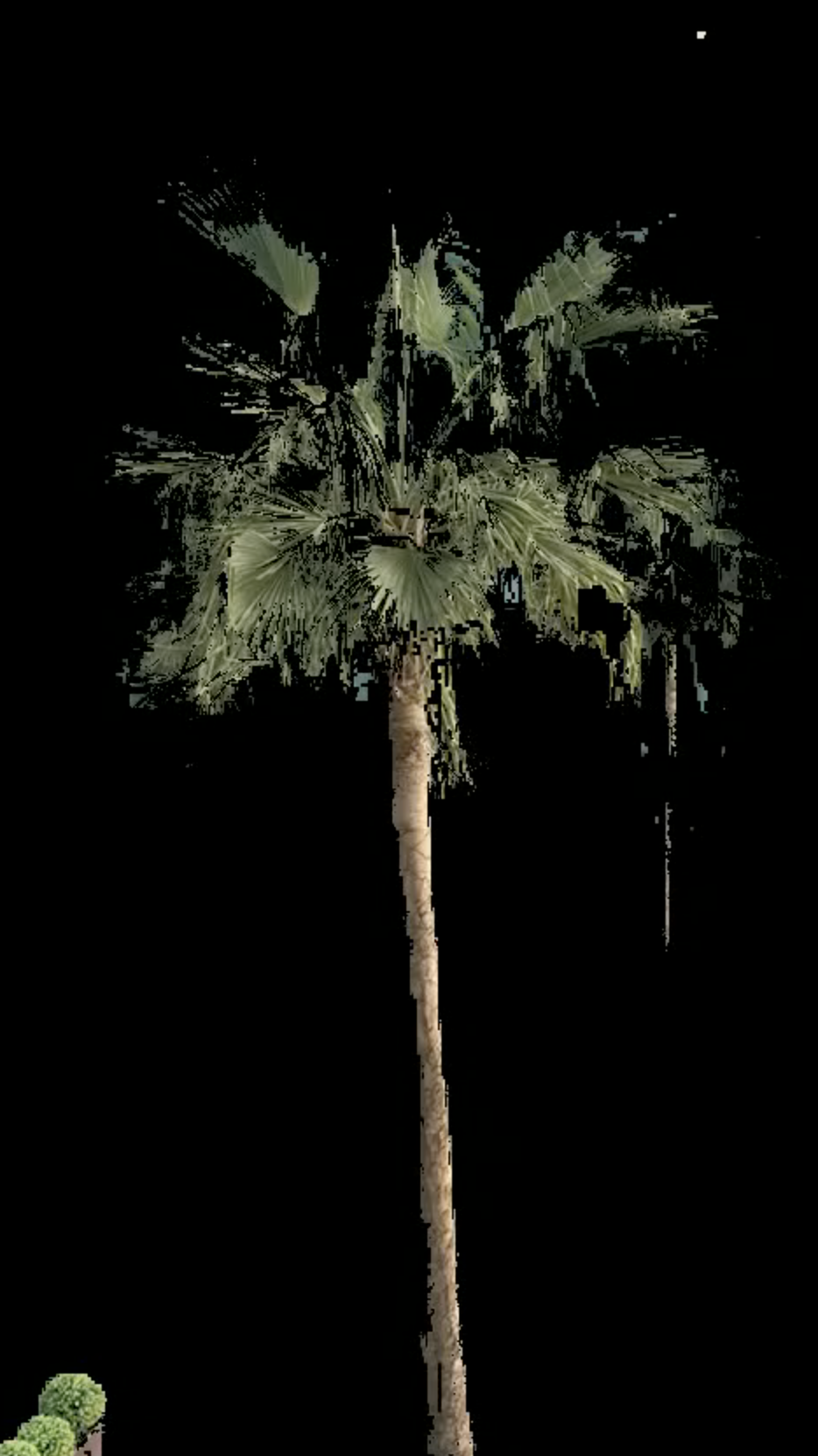
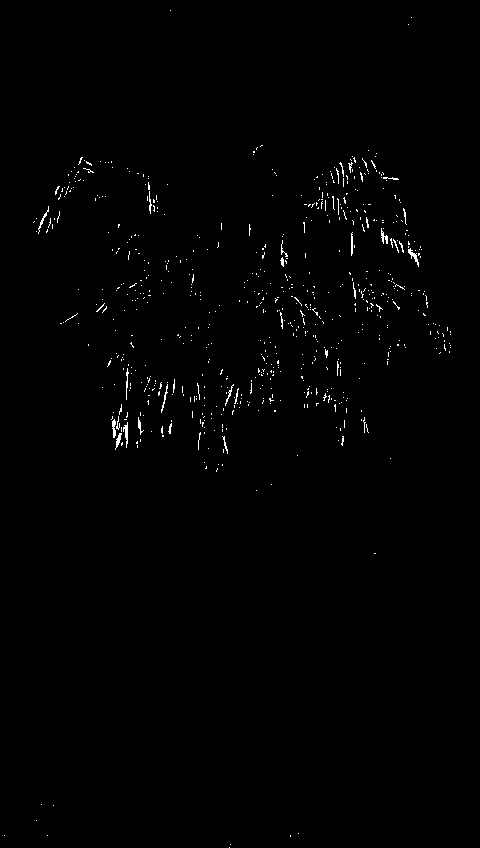

02 MOVEMENT DETECTION
Object detection techniques employed bounding boxes to enclose any mobile entities within the video frame. The objective was to gain a deeper understanding of the computer's perception of moving objects and subsequently adjust the approach accordingly. The computer did, however, encountered difficulties in recognizing the movement of palm trees and their leaves, instead prioritizing the identification of passing cars and pedestrians. This outcome prompted to refine the methodology to address these limitations.
The process was initiated by providing instructions to identify and track moving pixels, defining specific parameters based on pixel size. This approach facilitated the classification of the movement observed in palm tree leaves, attributed to the influence of wind. Subsequently, segmenting and distinguishing various components within the video through color and size differentiation were explored. The primary aim was to assess the digital capabilities to detect imperceptible dust particles in the air.
A criteria was set to identify and label changing pixels that fell below a certain size as dust particles, marked in red. Conversely, larger moving entities were intended to be classified as wind movements. However, the analysis encountered obstacles due to limitations inherent in the video footage, leading to the misclassification of the palm tree leaves as small dust particles instead of cohesive moving objects.
03 Contour Detection
Aiming to gain deeper understanding of the shapes and visual elements present in the video, contours were drawn around moving objects. Successful generation of contours around the palm tree leaves prompted further inquiry into whether the software accurately recognized the entire tree or merely outlined specific moving parts. Additionally, there were concerns regarding the ability to correctly detect and retain information about the tree leaves from frame to frame. Howevver, the software was forgetting the information after each frame, indicating a limitation in its capacity to consistently track and recall the palm tree leaves throughout the video.
Pixels to Energy
Visualising The Data
Clear and easily interpretable visualizations that facilitated quick comprehension of the information were designed. As a result, line graphs were developed to depict the variations in pixel data, reflecting the intensity of wind in relation to specific points in time or corresponding frames. These line graphs served as concise representations, enabling an understanding to grasp wind patterns and their fluctuations at a glance.
Visualising Through d3.JS
The objective was to enhance the existing line graphs by utilizing d3.js, a JavaScript library, to achieve greater coherence and visual clarity. This involved incorporating colors to represent the intensity or magnitude of wind at specific points in time. This refinement aimed to provide a more comprehensive understanding of wind patterns by visualizing the varying levels of intensity through color gradients in the graphs.
04 Experimenting with Skeleton Detection
The exploration into machine learning began with drawing inspiration from the implementation of PoseNet, a technology used for human body tracking. The goal was to develop a model capable of recognizing palm trees and accurately placing skeletal key points on them. This approach aimed to create neural networks that could depict the movement of individual palm tree leaves in response to the wind.
Trees as Harvestors
Manufacturing Piezoelectric PVDF Thin Film
The researchers initiated an investigation into the characteristics of the PVDF thin film sensor.
Subsequently, they established communication with the manufacturer of the piezo, known as
Polyvinylidene Fluoride (PVDF), to gain insights into the piezo film production process and its
associated
merits and drawbacks. This interaction facilitated a more critical examination of cost
allocation for large-scale production and manufacturing. The manufacturer provided information
regarding the energy output of the piezoelectric films, which depended on various factors such
as wind speed, area of the thin film, power coefficient, and air density.
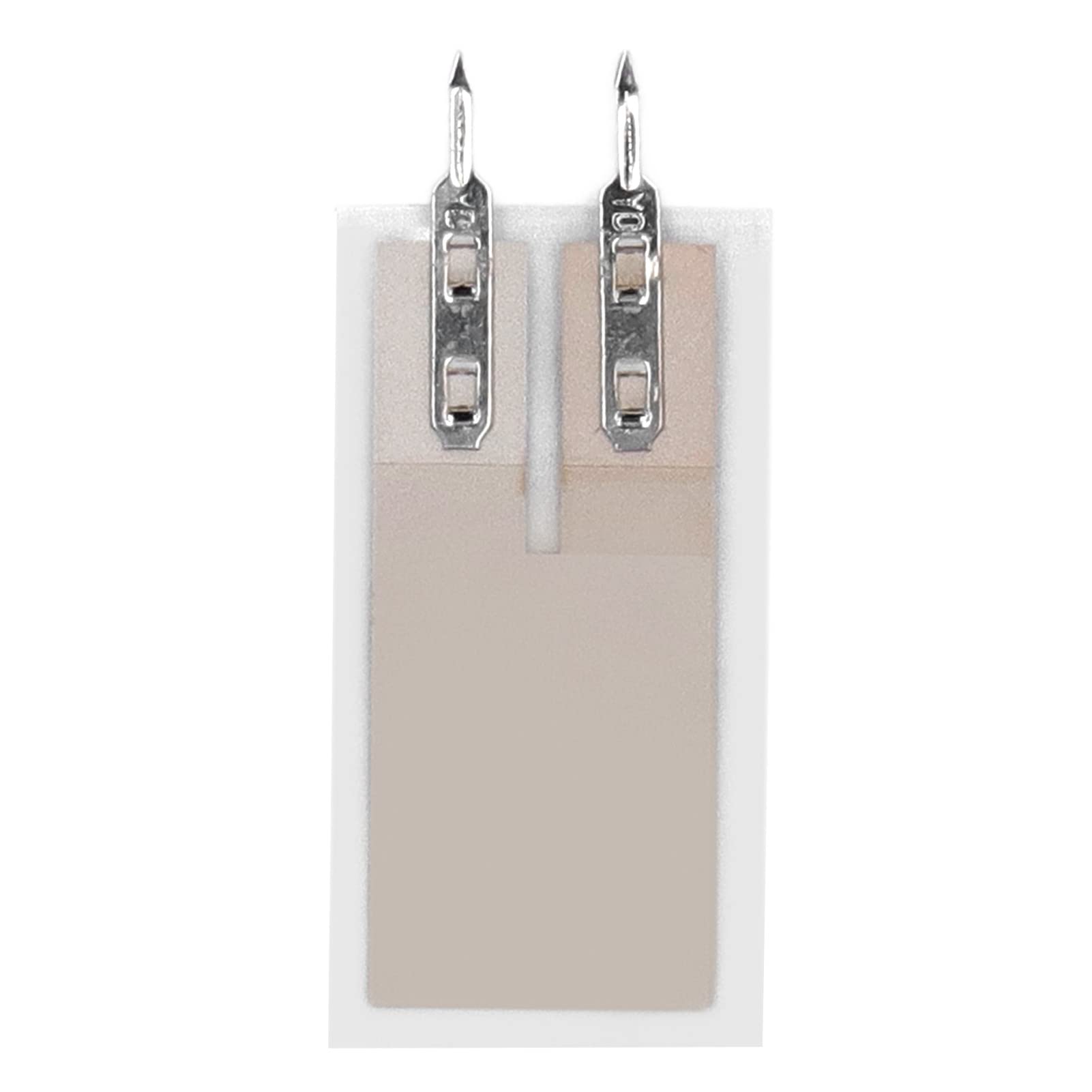
Polyvinylidene Fluoride (PVDF) Piezoelectric Thin Film
However, the cost associated with each factor was prohibitively
high, making it impractical for mass production. Consequently, locally mmanufactured
alternatives presented several advantages. Firstly, it eliminated the need for shipping,
thereby reducing costs and delivery time. Additionally, it allowed the utilization of locally
available materials exclusive to the United Arab Emirates (UAE).
A series of experiments were conducted to measure the electrical conductivity of various materials. The experiments involved using a capacitor, diode, and LED to assess the electrical conductivity of each material. The results obtained from these experiments were carefully documented and analyzed. After analysis, it was discovered that regular printing paper exhibited the highest level of electrical conductivity amongst others. These allowed for identifying the optimal material for developing the piezoelectric sensor.
How to calculate the power?
Power (in watts) = 0.5 * η * ρ * A * V^3
η: Power coefficient (between 0 and 1)
ρ: Air density (in kg/m³)
A: Area of the thin
film (in square meters)
V: Wind speed (in m/s)

Finalising the Material
The ultimate material utilized consisted of a duo of paper sheets. One of these papers possessed a layer of aluminum affixed to a single side. On the other hand, the second paper also exhibited aluminum on one side; however, it was covered with kapton tape on the identical side. When subjected to friction, these papers generated an electrical charge that could subsequently be preserved.
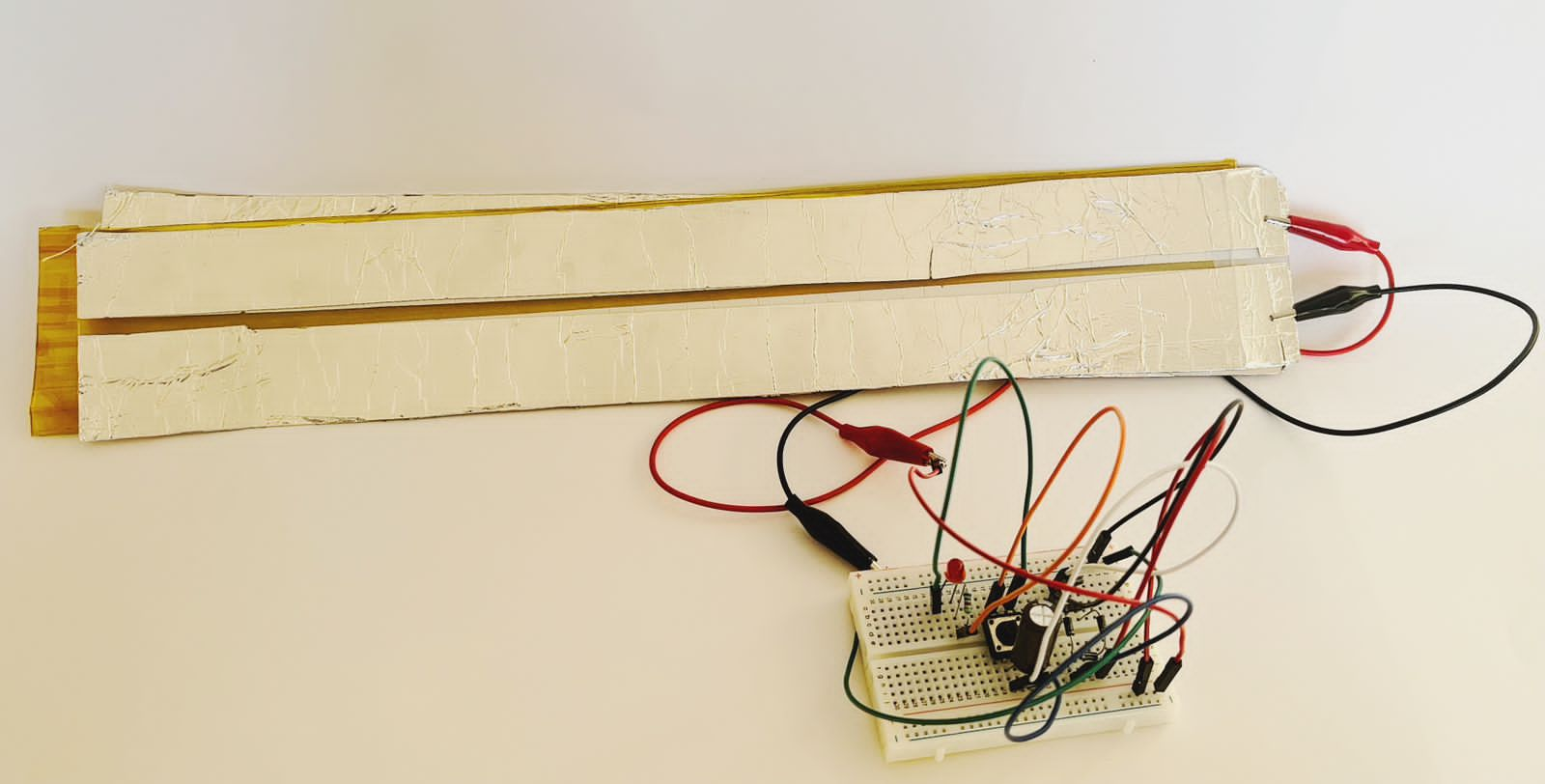 Piezoelectric Module made out of paper, kapton tape & alumminium
tape
Piezoelectric Module made out of paper, kapton tape & alumminium
tape
Palm Tree Cycle
The palm tree cycle is a research analysis that aims to understand and decipher the anatomy of the palm tree leaf. The UAE in specific has numerous species of palm trees, namely, date palm, canary island date palm, fountain palm and washingtonia palm treess.
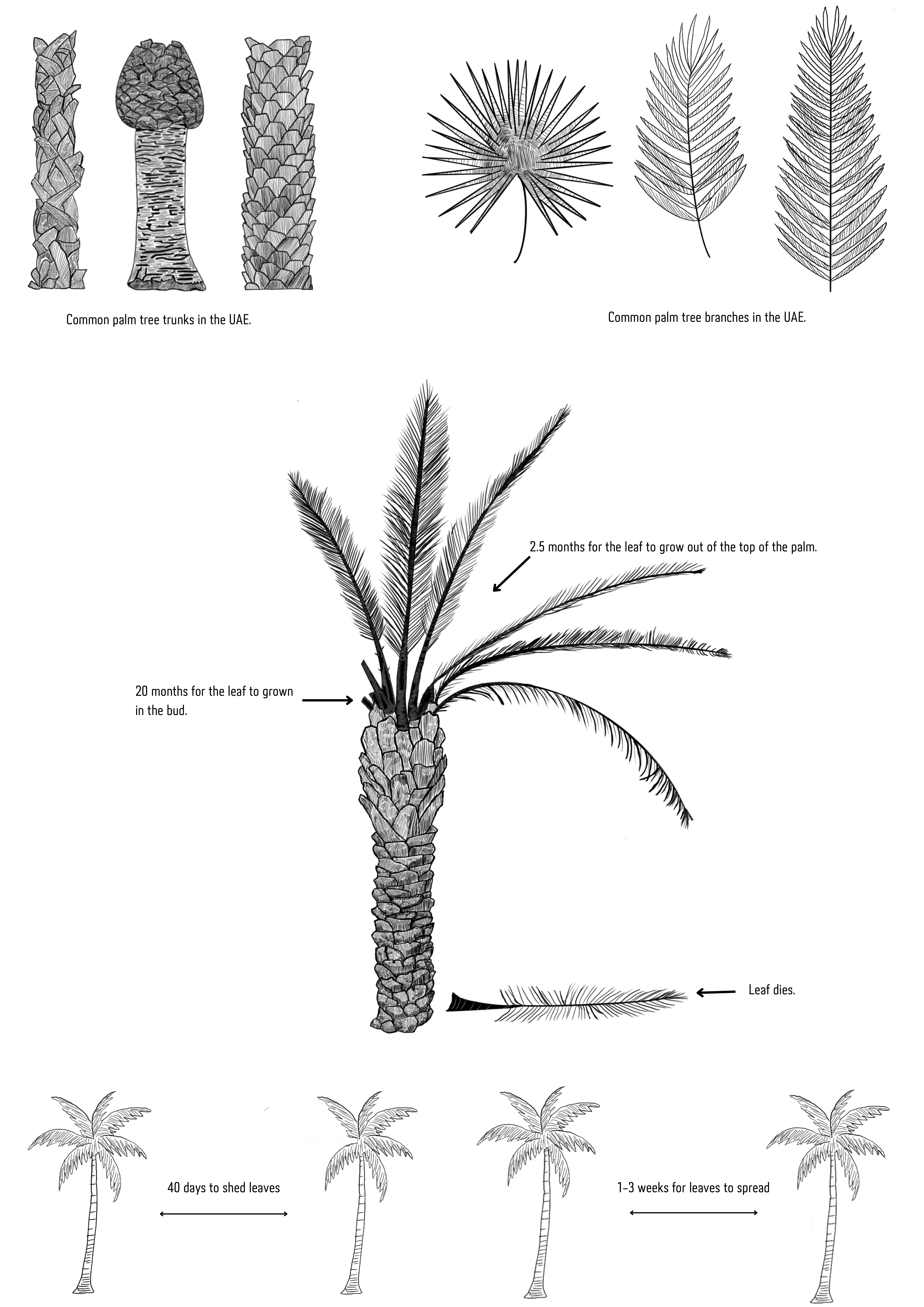
What If Trees Were Our Main Source Of Light?
Street lights, which were formerly a main source of outdoor light at the late hours of the day, have now been replaced by trees which illuminate the world with the help of the wind. Palm trees on every corner have sensors placed on the top of the tree trunk which detects wind vibrations in the leaves and converts them into electricity for the city.
The city’s carbon impact has drastically dropped ever since it turned to this clean, renewable energy source. Today, it is simpler and more sustainable to live in the world. The city saved a lot of money on its energy bills thanks to this new system, which was also environmentally friendly.
Trees As Street Lamps
Piezoelectric sensors can track the vibrations and movements of a palm tree when they are integrated into the tree. These movements can be brought on by the wind, rain, or even human contact. Moreover, electricity can be produced using the data the sensors acquire. In this scenario, the piezoelectric sensors would register the pressure or movement and produce an electric charge when the leaves of the palm tree swayed in the wind or when someone touched them. The LED light bulbs mounted to the tree would then be turned on using this charge.

Whether the palm tree’s roots or leaves are used as piezoelectric sensors, the sensors must be carefully integrated into the tree’s existing structure. The sensors would need to be carefully inserted into the roots of the leave leaves in order to accomplish this.
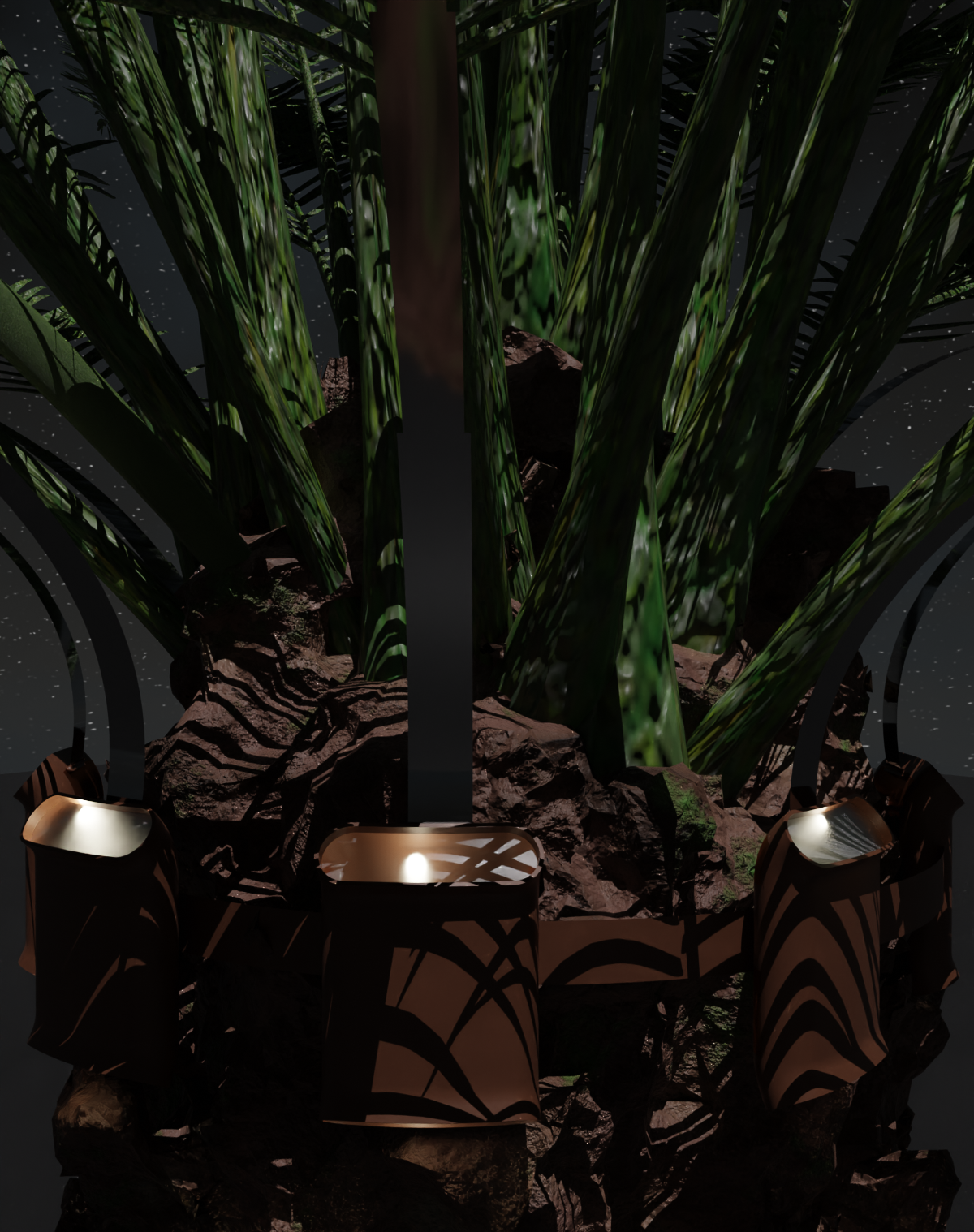
Street Lamps in Dubai, UAE neighbourhoods
Whether the palm tree’s roots or leaves are used as piezoelectric sensors, the sensors must be carefully integrated into the tree’s existing structure. The sensors would need to be carefully inserted into the roots of the leave leaves in order to accomplish this.
The street lights in Dubai are approximately 100-150 feet apart. In Business Bay, there are an estimate of 21,780 street lights spanning over 6 million square feet. On average, these street lights consume over 125kW per month. This rounds up to 30-60 watts per hour for a single lamp.
Piezoelectric Energy Harvesting Kit
Recognizing the significant potential of piezoelectric technology for electricity generation, the proposal aims to design a versatile "toolkit" that enables users to capture wind data. In return, users would receive valuable information to assist them in identifying the optimal locations for deploying their piezoelectric "energy harvester" devices. This cohesive experience aimed to empower users with the necessary tools and insights for efficient utilization of wind energy through piezoelectricity.
One of the devices included in the toolkit is the Piezo "harvester." This device is specifically designed to be attached to the tip of a tree leaf, enabling the harvesting of energy. The harvested energy is collected and stored in batteries for future use. By harnessing the natural movements of the tree's leaves, the Piezo harvester efficiently captures and converts mechanical energy into electrical energy, which can be stored and utilized at a later time. This device serves as an innovative means of generating renewable energy by leveraging the inherent motion of tree leaves.
electrical components
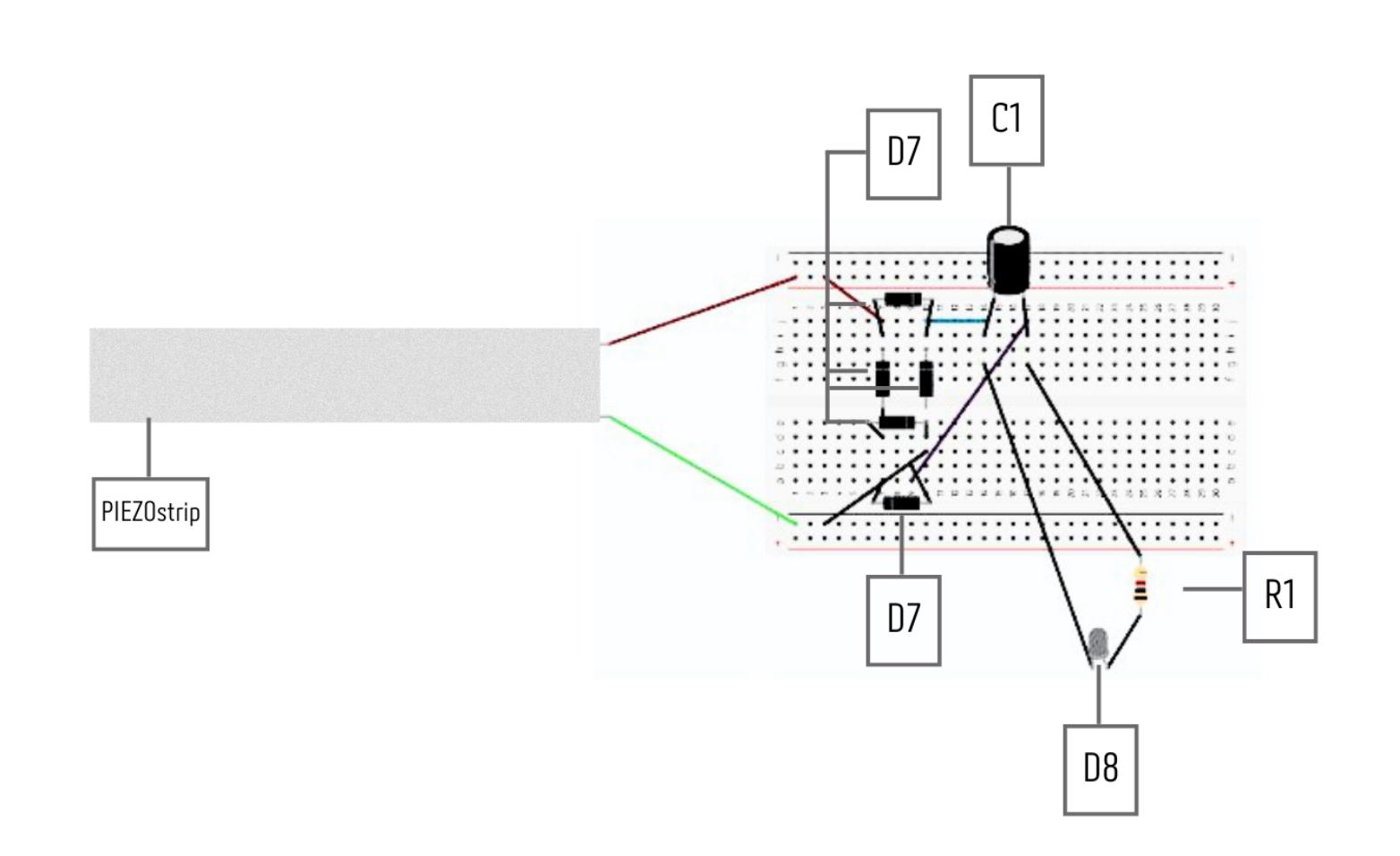
The circuit components used in creating the system were relatively straightforward. The 1000uF capacitor functioned as the primary element for storing the piezo current. Crocodile clips connected the piezo to the breadboard, facilitating the electrical connection on either side. To convert the alternating current (AC) generated by the piezo into direct current (DC), a diode rectifier was used. This rectifier ensured that the current flow only occurred in one direction. Subsequently, the DC current was transmitted to the capacitor where it was stored. Finally, the stored current was utilized to illuminate an LED. Overall, this simple circuit configuration allowed for the efficient capture, conversion, storage, and utilization of the piezo-generated current to power the LED.

3d model renders
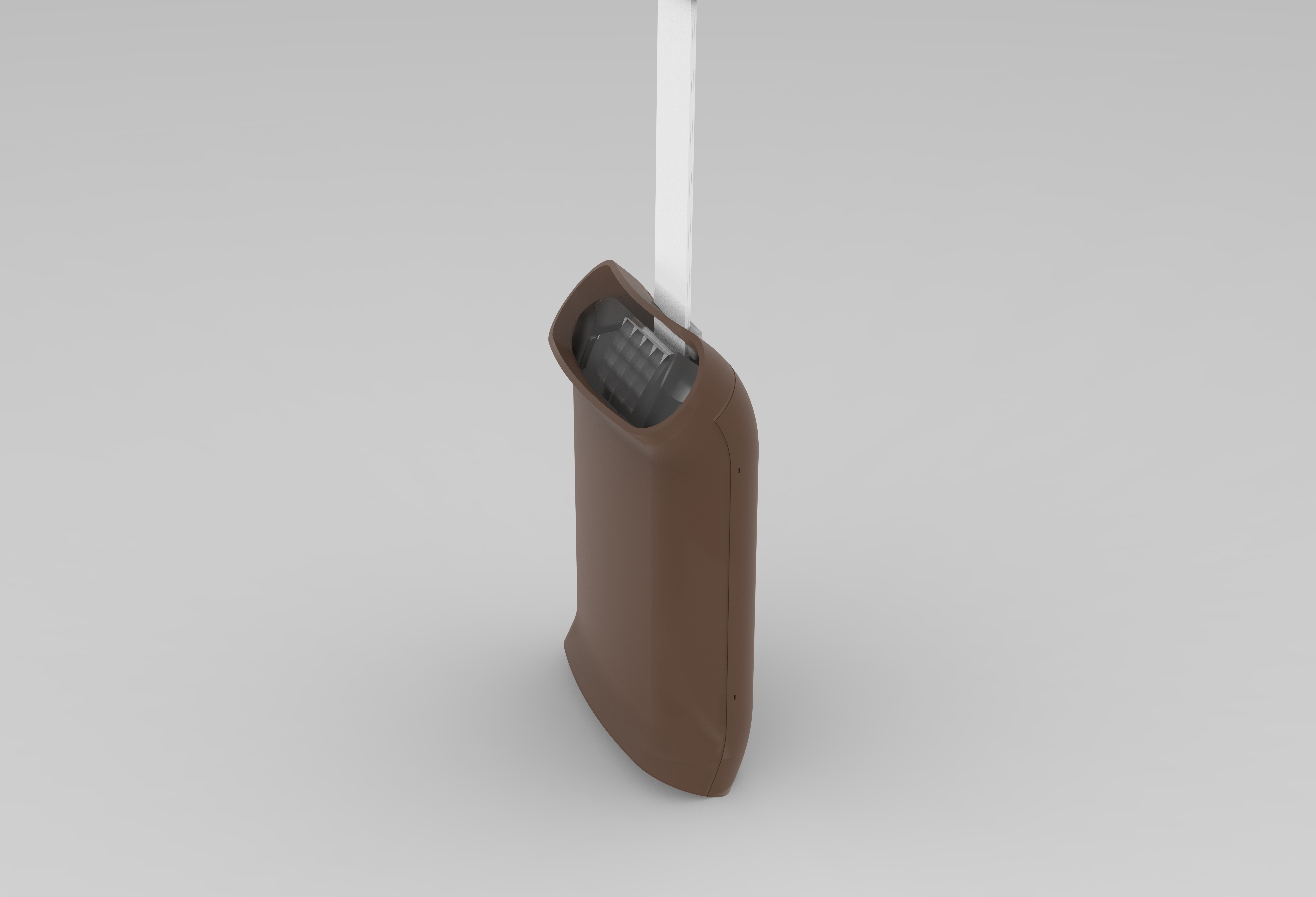

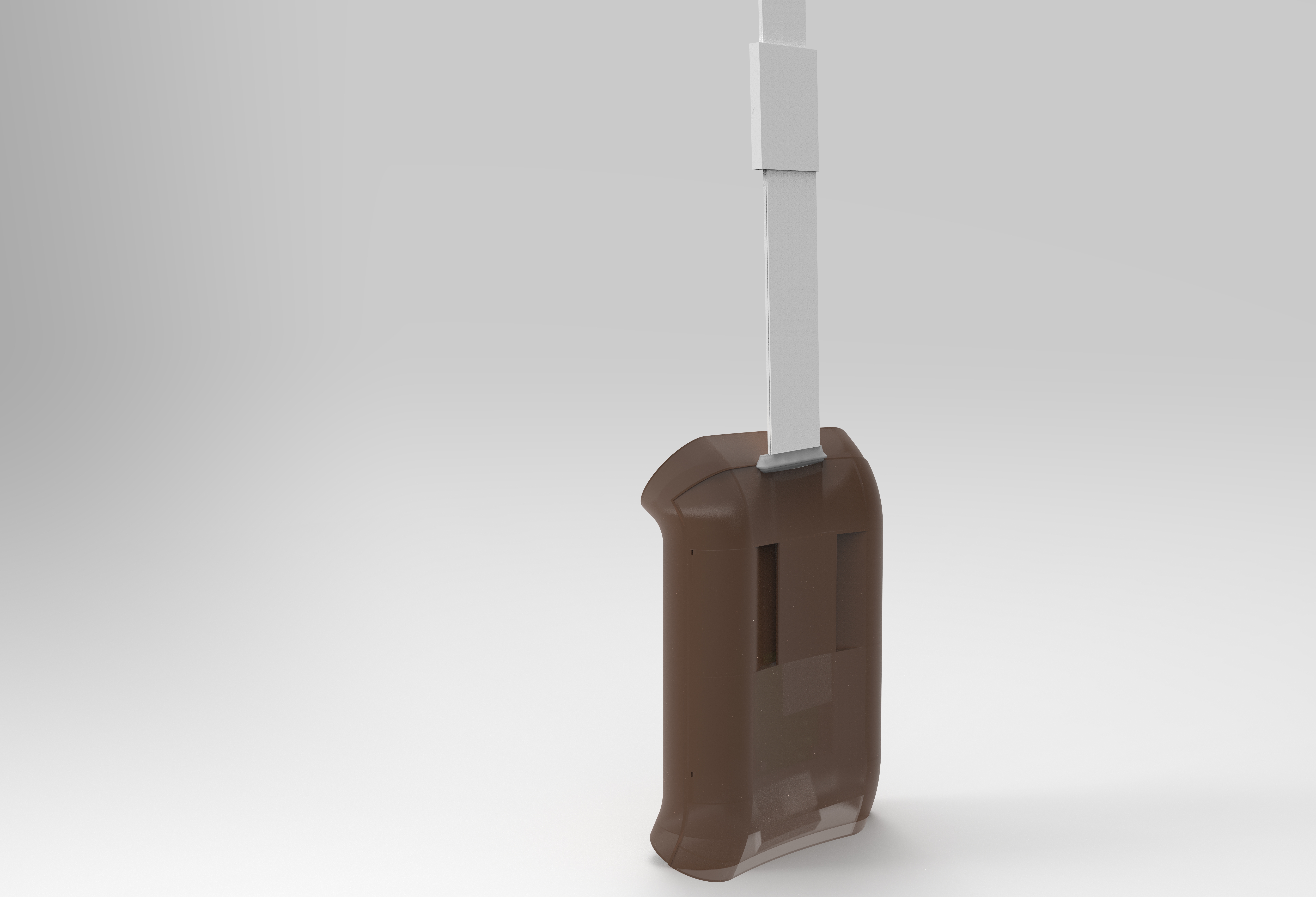

References
www.youtube.com. (lesics). Understanding Piezoelectric effect! [online] Available at:
https://youtu.be/_XABS0dR15o [Accessed 16 March 2023].
www.youtube.com. (Ludic Science ). Piezoelectric Generator. [online] Available at:
https://youtu.be/ACsy6xSIBm8 [Accessed 21 March 2023].
The National. (2020). Arish: the palm leaf’s role in the past and future of sustainable
architecture in the UAE. [online] Available at:
https://www.thenationalnews.com/arts-culture/art/arish-the-palm-leaf-s-role-in-the-past-and-future-of-sustainable-architecture-in-the-uae-1.1051472.
Date Palma Dubai. (2020). Importance of date palm trees for UAE. [online] Available at:
https://datepalmdubai.com/importance-of-date-palm-trees-for-uae/
Clean Deal Gardens. (n.d.). Different Types Of Palm Trees In Dubai. [online] Available at:
https://www.cleandealgardens.com/palm-trees/
www.youtube.com. ( TNT ). DIY Nanogenerators - How Triboelectricity Works. [online]
Available at: https://youtu.be/UDKOrSIreGI [Accessed 16 May 2023].
www.youtube.com. (n.d). Triboelectric Nanogenerators. [online] Available at:
https://youtu.be/j2L4IpsVlk8 [Accessed 16 May 2023].
Instructables (2016). Piezoelectric Shoes: Charge Your Mobile Device by Walking! [online]
Instructables. Available at:
https://www.instructables.com/Piezoelectric-Shoes-Charge-Your-Mobile-Device-by-W/.
RAKESH , S. (2017). Study of Hybrid Energy Generation through Solar Power and
Piezoelectricity for Dubai Airports. [online] Research Gate. Available at:
https://www.researchgate.net/publication/ 316273573_Study_of_Hybrid_Energy_Generation_ through_Solar_Power_and_Piezoelectricity_for_Dubai_Airports
[Accessed 9 Apr. 2023].